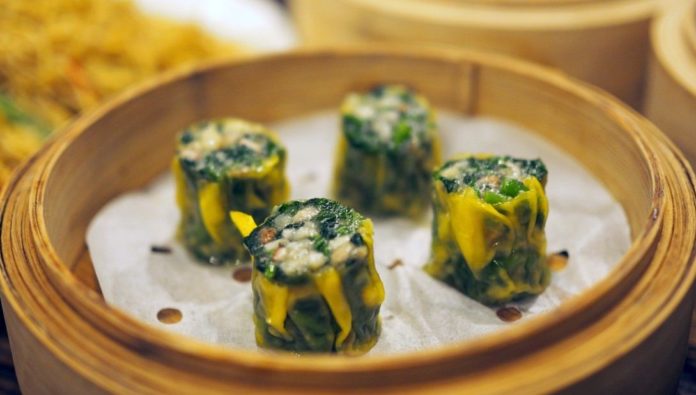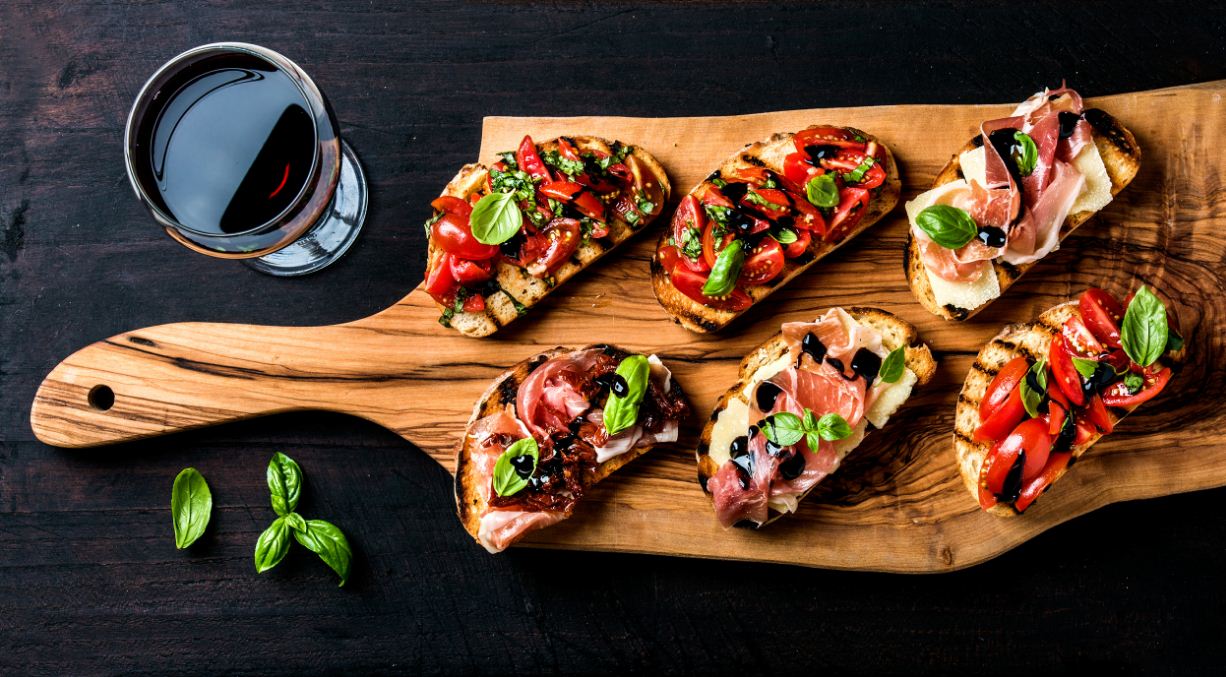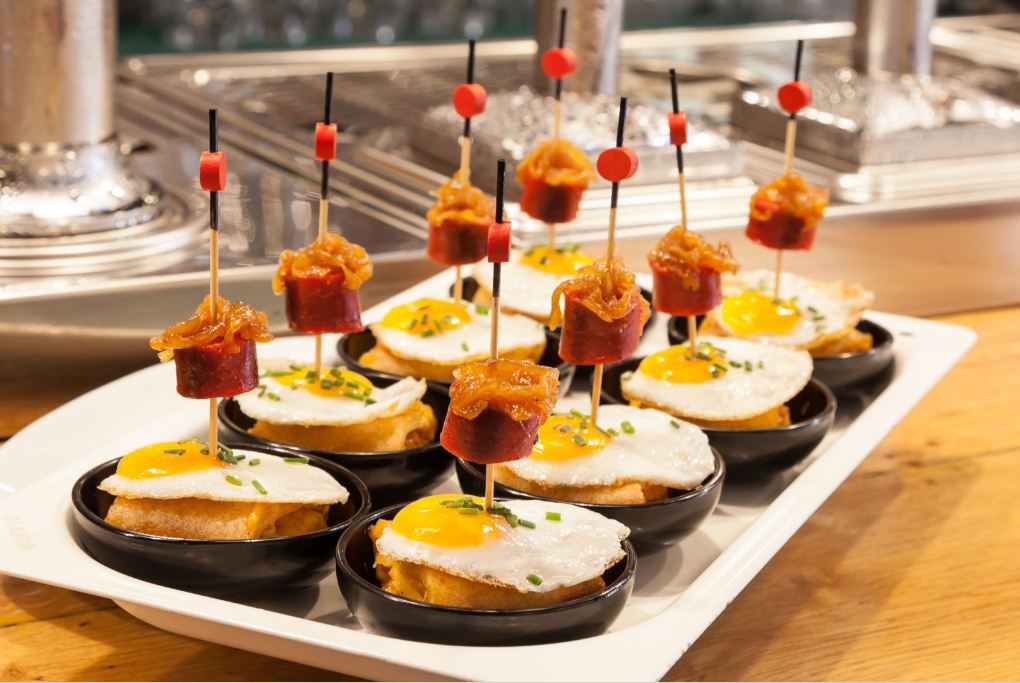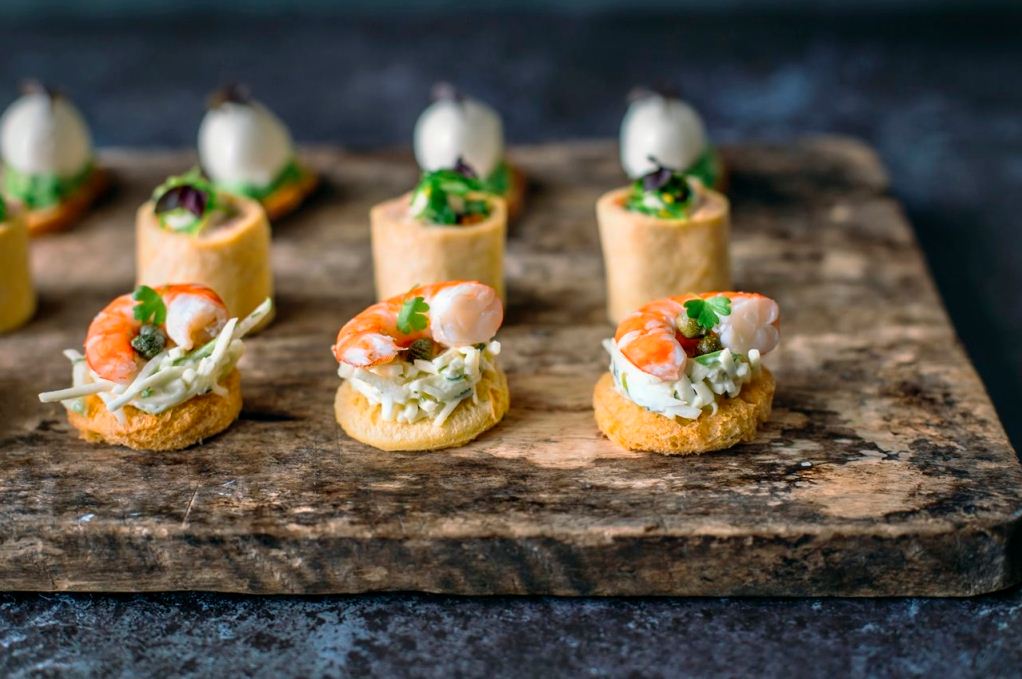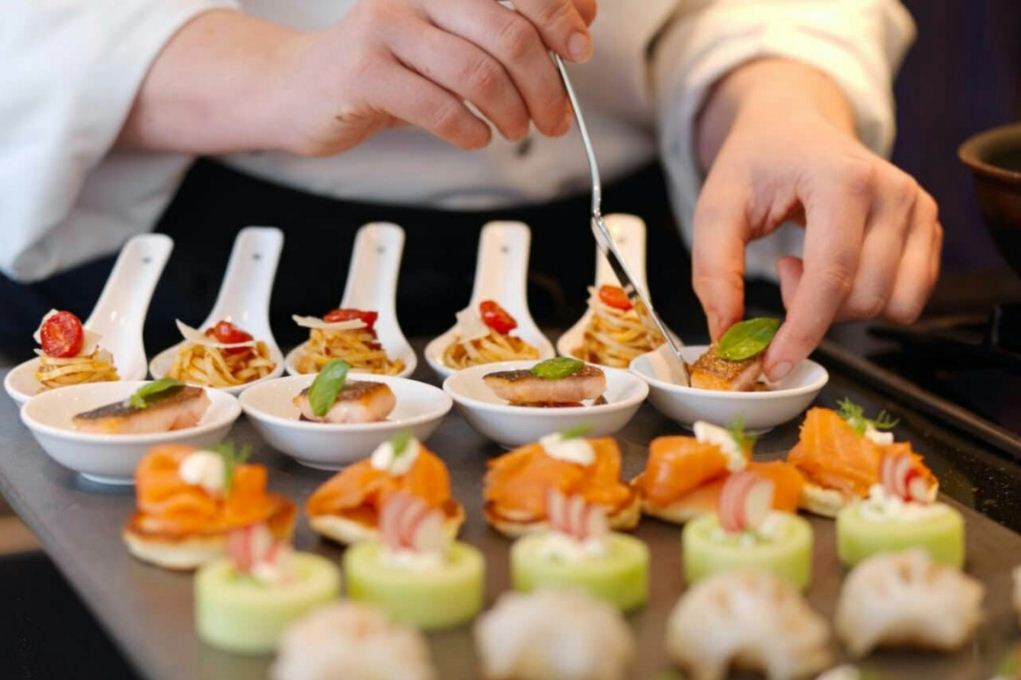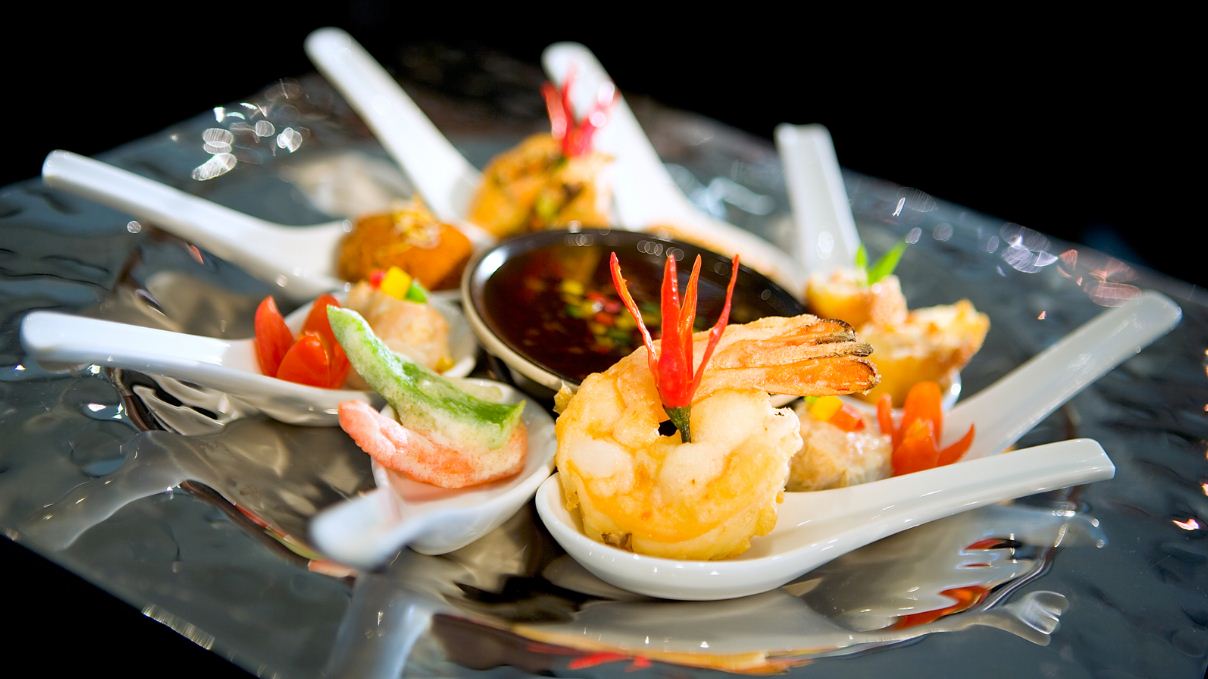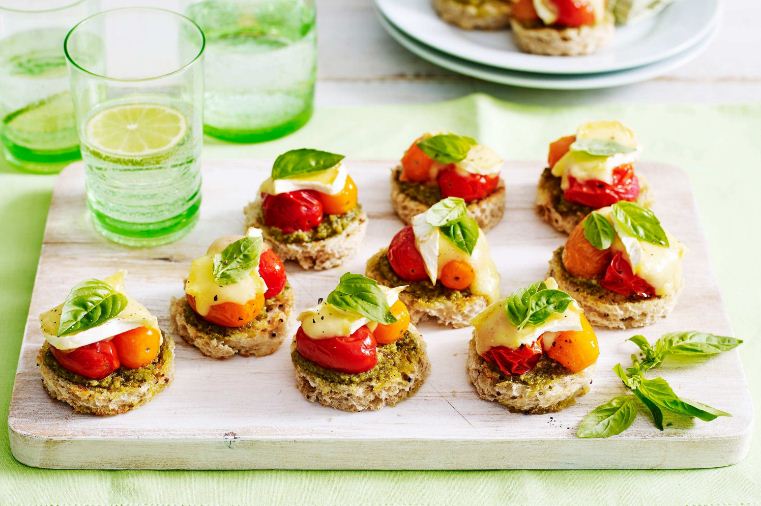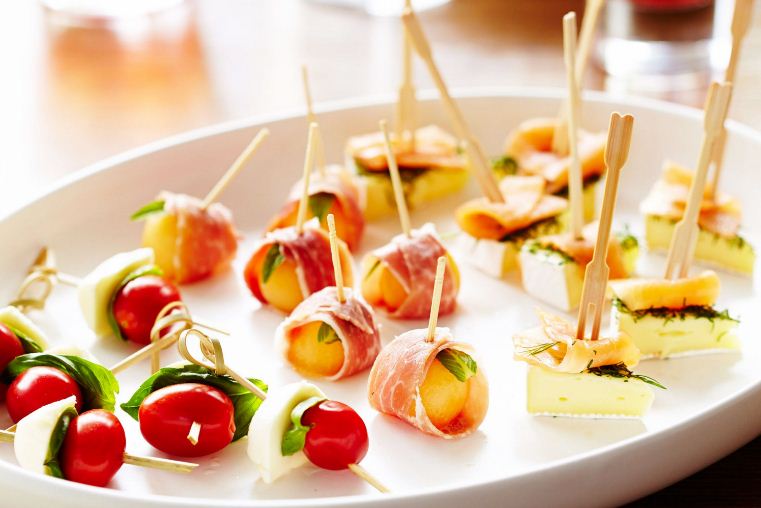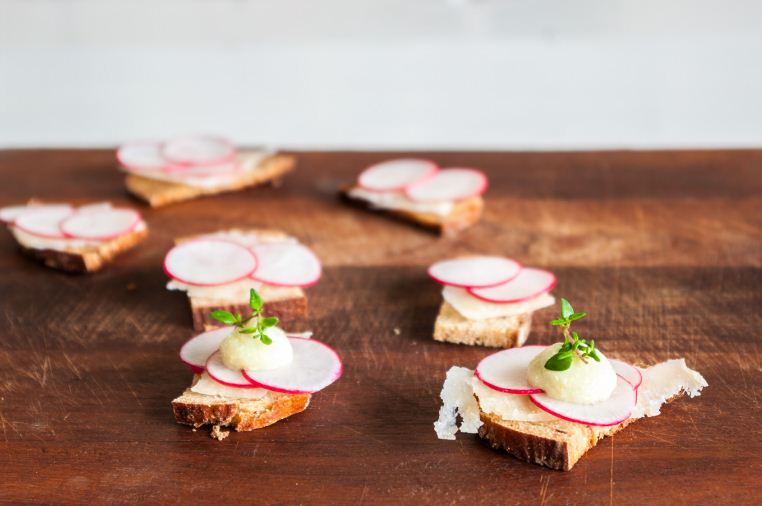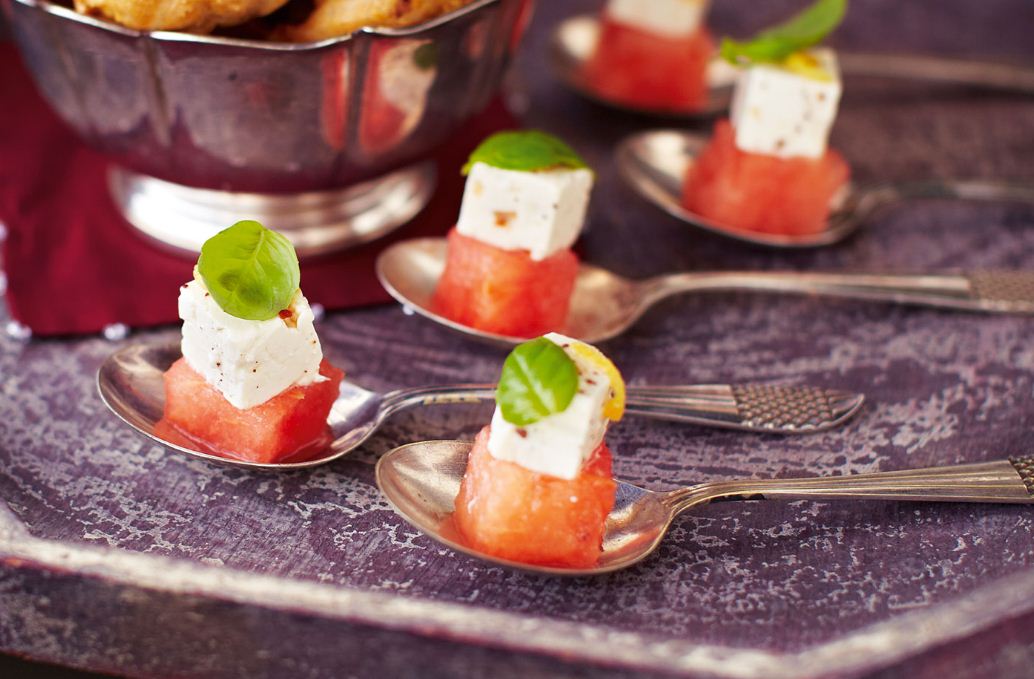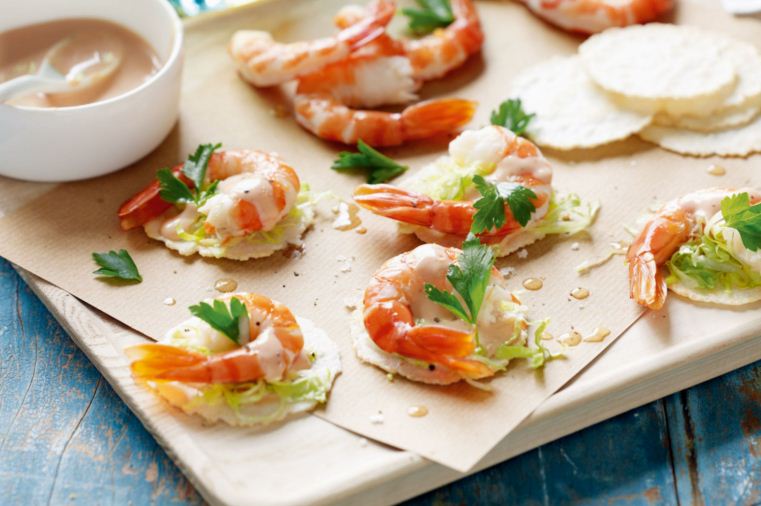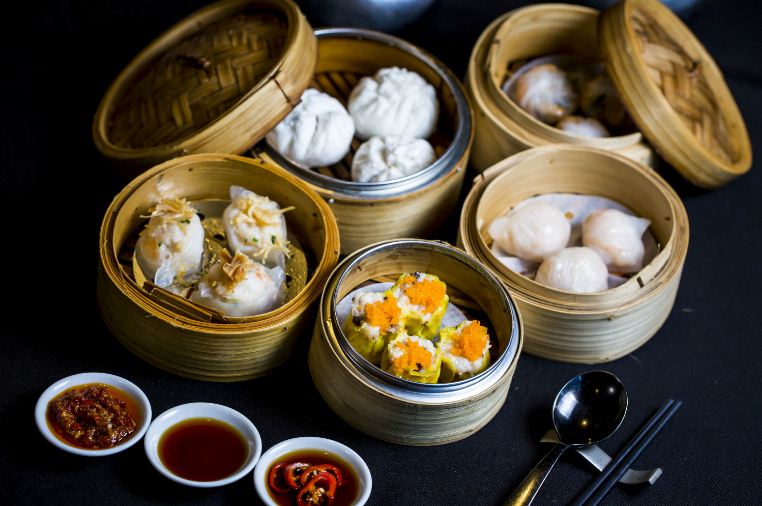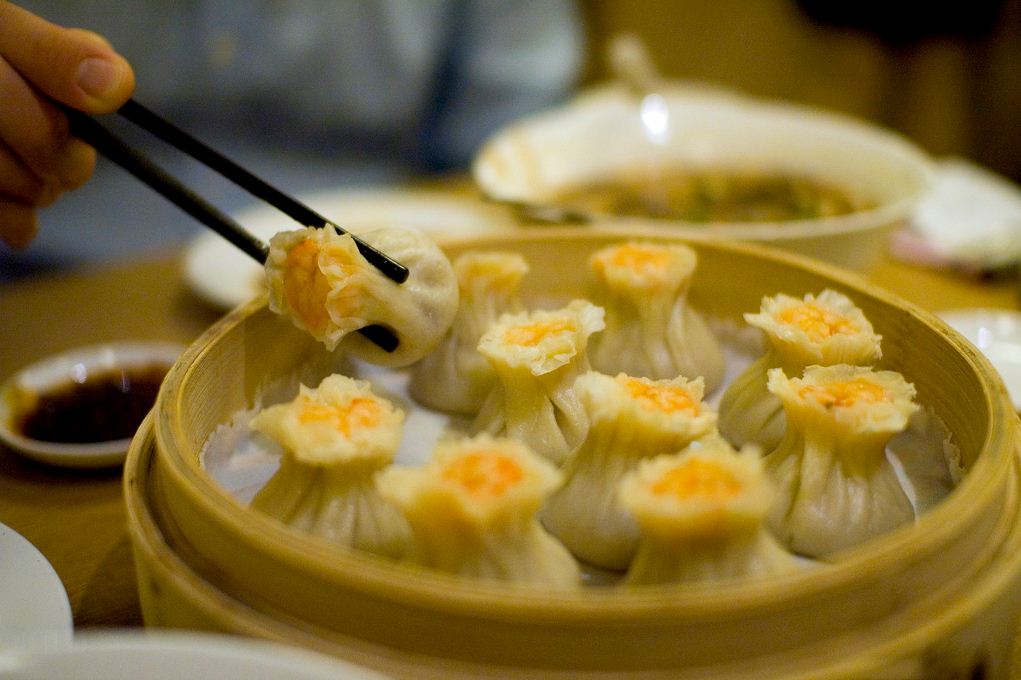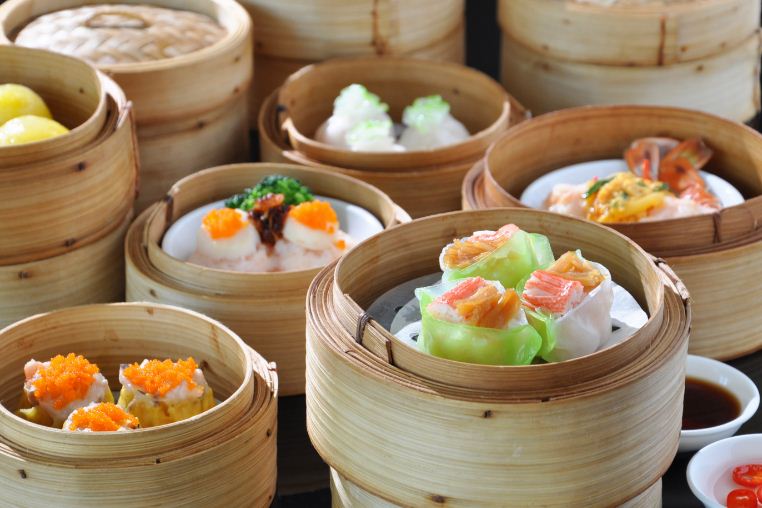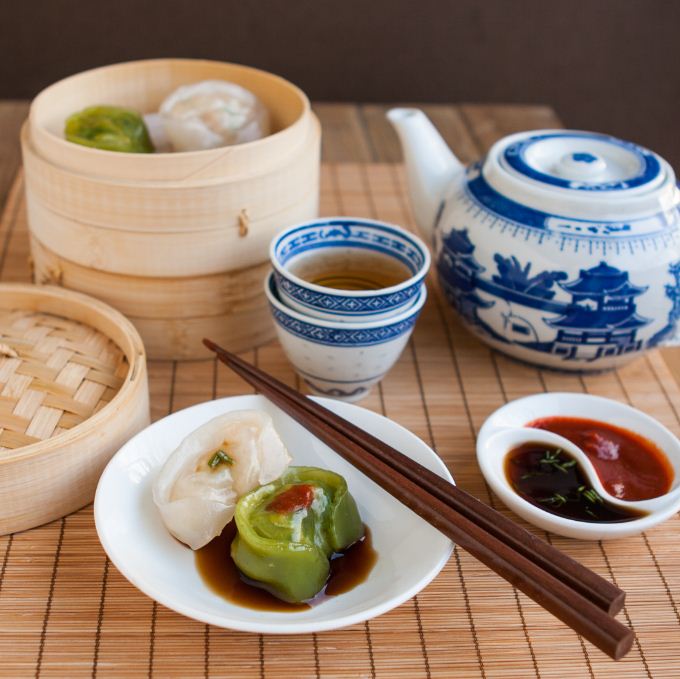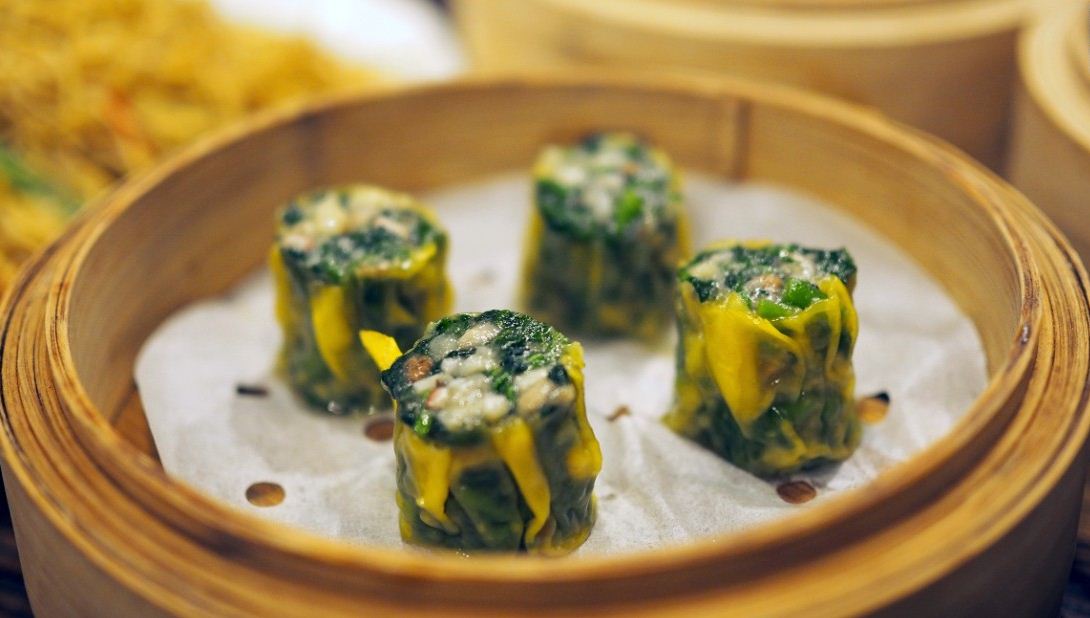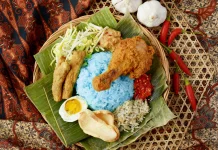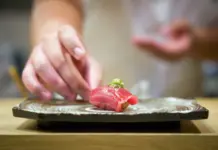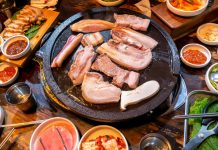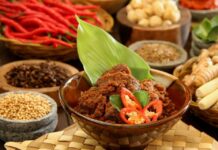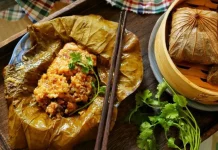March is always the month for a variety of tastes, highlighted by dozens of food festivals. Held in fingers, embrace lovely looks, and have pleasant flavors, the triples – Tapas, Canapé and Dimsum – are always favorite choices of foodies around the world. Let’s have an epicurean adventure of food with us today.
- Melaka food blog — Experience Melaka delicacies, arrived at by Trishaw
- Vietnam food culture — Flowers and leaves in Vietnamese cuisine
- Pinoy dessert — 5 typical Pinoy sweet dishes for dessert
- Swedish Fika — A Swedish cultural experience
- Bali food guide — 10 best local foods in Bali & best places to find them
Tapas — The “Cover” of a Sherry wine glass
If you are invited for a dinner in Spain, don’t be surprised when your dinner starts at 9pm and may finish at midnight before you can go out for a drink. Over here there are many interesting culinary experiences which only take place after midnight, for example, hanging out in a lounge and eating tapas with friends.
You may hear many different versions of “tapas”, which is derived from “tapar” – “cover” in Spanish. The popular story of Tapas told about a Spanish king, King Alfonso XIII, who came to visit a famous tavern and ordered a drink. Since Cadiz was a city of wind, a waiter had to cover his drink by a cured ham. The King didn’t know it was merely for covering, he found it funny and ate it with the drink. Later then, his following orders were only about drinks with “cover” – “tapar” in Spanish.
The best choice for tapas in Spain is Chorizo – a spicy signature cured sausage of the country. In Saigon, you may enjoy other kinds of tapas such as slices of bread with ham, Banderillas (skewer of olive,pickled vegetables, onion and other vegetables), Calamares Fritos (rings of battered squid) and Berenjenas Gratinadas, which is grilled eggplant with cheese…Everything is served in small portion, enough for you to have it in one bite literally. Sometimes, tapas are also called pinchos because many of them have a pincho (toothpick) through them. It’s just one toothpick to keep olives, cheese, ham (or whatever snacks) sticking on a slice of bread. Forget knives and forks, it’s time to let our fingers feel the food. This is a bit different from canapé and dimsum, which are also small and creative, but quite a hard rock for our chefs.
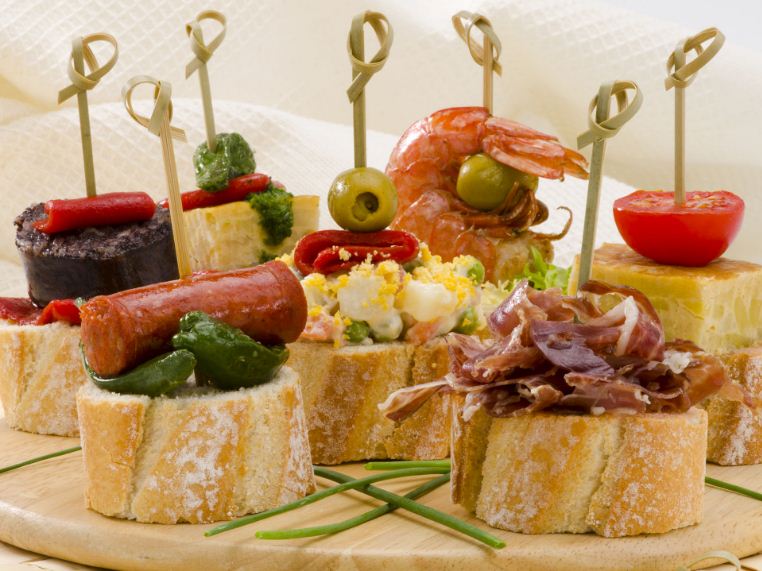
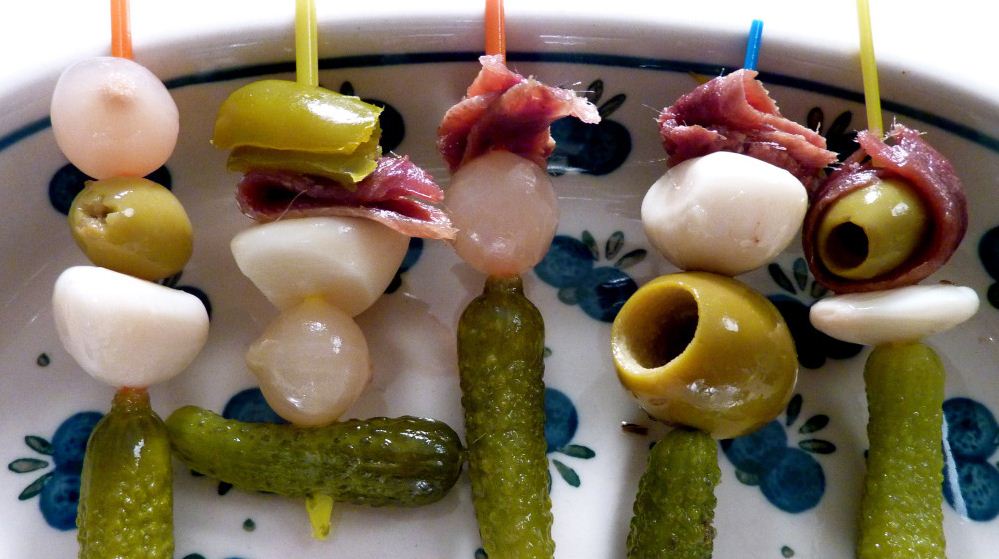
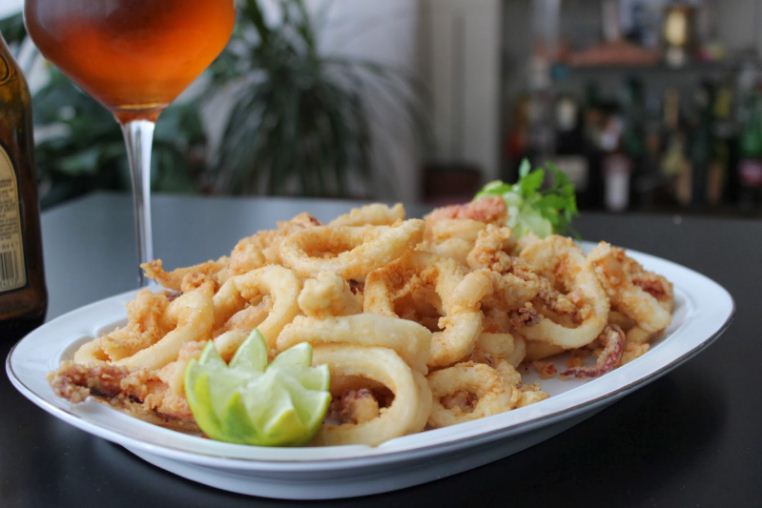
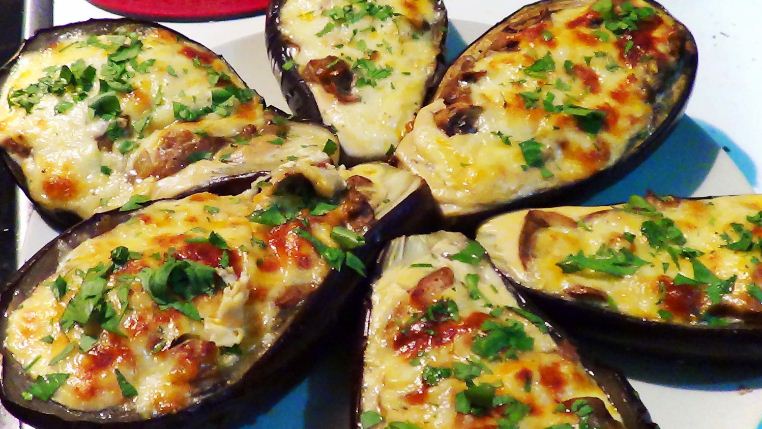
Canapé — Savory, Creative and Sophisticated!
Unlike tapas, for canapé, it takes much attachment to its appearance. It is a “must” to have Canapé in a small portion enough for you to have it in no more than one bite. Canapé is often served on a spoon, a glass, or more creatively, in a hopper made from eggs and flour. Each dish of canapé is shaped creatively to bring out its color. These exquisite little bites requires hours of rolling, baking and finishing. Imagine you have a Canapé party with 5 courses for 50 people; just garnishing 250 spoons of servings would drive you crazy. It is time-consuming, but what you accomplish later is more than amazing. You reap what you sow!
Since the 18th century (the time of Queen Marie Antoinette, who brought the legacy of croissant to France), French aristocrats first began offering Canapé for their guests who couldn’t wait till the party took place. Canapés were slices of sandwiches cut into fine pieces and then were grilled with butter or cream cheese and added with caviar and ham. After that, they were decorated with aromatic herbs or truffle mushroom. These exquisite little pieces were pretty classy and expensive during those days. Nowadays, people have more options for a tempting Canapé party, matched to the occasions, seasons and budgets.
Canapés now can be made of foie gras, cheese, salmon, purees and even sushi, or sashimi. How to throw a great party? Let’s start with some Canapé ideas.
Canapé is often served at cocktail parties where people can stand and move around to get along with different groups. Therefore, to serve Canapé, waiters can get out of strict etiquettes like flawless white tablecloths, crystal glassware and stoned-face servers in tuxedos… It’s time to brighten your party with smiles and comfort styles. However, understanding clearly about these dishes is essential for waiters since your dinners often love to ask about their food.
Dimsum — “Touch the heart”
Thousand years ago on the ancient Silk Road, which linked the East and the West, traders often stopped by roadside tea houses to enjoy the tea. At that time, the house owners would serve snacks called Dimsum with tea. Gradually, Cantonese people (Chinese) turn Dimsum into an art of cuisine. How has Dimsum – meaning “Touch the heart” – captured hearts of foodies around the world?
Most of people find it really difficult to distinguish har gao, shu mai or jiaozi…A friend of mine, who is a chef, reveals his secret of reading Dimsum just by looking at its wrapping. If the outside of Baozi was a denim jacket, the skin of shu mai could be compared with a piece of golden silk made of Won-Ton flour; meanwhile, the wrapping of Har-gao was as translucent as chiffon.
Dimsum is small and extremely sophisticated. As for Dimsum, the trickiest part starts at the very beginning: how to get the right texture for the skin. Dough for each kind of dumplings should be prepared differently. Watch out when you knead the battle to prepare wrapper! Not too thick, not too thin and not too stretchy. In addition, pleating is quite an obstacle for clumsy hands. Not only you have to pleat each dumpling merely by hands, you have to create multiple shapes: flower-shape for har-gao and simple crescent wrap for dumplings,…It’s definitely not easy at all to see the stuffing inside the crystal-skinned Har-gao. No wonder why Dimsum has become an art on the table with more than 100 distinctive dishes.
While Tapas and Canapé allow you to walk around for better communication with new faces, Dimsum is more about intimating and sharing between friends and family thanks to the rotating round table. One more touch, if you hear the rule of tapping two fingers on the table to politely ask for tea, don’t quickly apply it in Vietnam. Directly asking is more appreciated in Vietnamese culture.
While Tapas and Canapé allow you to walk around for better communication with new faces, Dimsum is more about intimating and sharing between friends and family thanks to the rotating round table.
Further information
If you traveling to Ho Chi Minh City (Saigon) You can enjoy these dishes at:
Orientica restaurant (Hotel Equatorial Ho Chi Minh City)
242 Tran Binh Trong, Dist.5, HCMC
Tel: 08.38397777 (ext: 8020)
Web: www.equatorial.com
>>>The hotel serves typical dimsums such as shrimp har-gao, Shang-hai boiled dumplings (with hot sauce), yellow fish gao, sweet dimsum such as egg tart or durian viscous cake.
Sheraton Saigon
88 Dong Khoi, Dist.1, HCMC
Tel: 08.3827 2828
Website: www.sheraton.com/saigon
>>> Dimsum Recommendation: Siew Mai with Salmon Roe, Deep-fried Bean Curd Skin Rolled with Shrimp, Deep-fried Diced Cod Taro Dumplings, Steamed Xiao Long Bao “Nan Xiang” Style, Soft Custard Buns,…
>>> Canapé available upon request.
The Long
57 – 69F Dong Khoi (22 – 36 Nguyen Hue), Dist.1, HCMC
Tel: 08.38236 688
(For Canape & Tapas only)
































![10 best airports in Asia in 2016 [RANKED] kuala-lumpur-international-airport-best airports in asia in 2016 by skytrax ratings](https://livingnomads.com/wp-content/uploads/2016/08/29/kuala-lumpur-international-airport-best-airports-in-asia-in-2016-by-skytrax-ratings-218x150.jpg)








